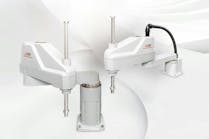With more than 1,900 guest rooms and 220,000 sq ft of meeting and exhibit space, Coronado Springs Resort at Walt Disney World in Orlando, Fla., is among the premier single-level hotel convention facilities on the East Coast. The newest addition to the resort is 101,000-sq-ft Veracruz Exhibit Hall, completed in June 2005.
The hall's mechanical-system design included a new chiller and boiler plant, 13 air-handling units (AHUs), and 17 variable-air-volume (VAV) boxes. The chiller plant employs a variable-flow primary system with variable-speed-drive chillers. HVAC operation is controlled with an EMS designed using Disney's EMS-design, procurement, and operation process.
Submetering of chiller-plant operation was part of the original EMS design. Each chiller came with an on-board electric meter, as well as chilled-water supply- and return-temperature sensors. A chilled-water flow meter was added to each chiller to allow chilled-water tons to be calculated. Additional electric submeters for measuring condenser and chilled-water-pump motors and cooling-tower fans were included. The EMS was designed to collect energy data, chiller operational parameters, and space-temperature and relative-humidity values.
As with most projects, there was a period of test and adjustment as the mechanical system progressed from drawing board to operation. In collaboration with the chiller manufacturer and design engineer, Disney's energy-management team made the following changes to the original sequence of operation:
-
The chiller leaving-water-temperature set point was raised from 40°F to 44°F.
-
Minimum chilled-water flow through each chiller was lowered from 600 gpm to 400 gpm, which increased the differential temperature at each chiller.
-
The AHUs were set up as single-zone VAV systems. The discharge-air temperature was fixed, with variable-speed drives on each unit modulating fan speed to maintain the space-temperature set point.
-
The minimum speed of each AHU variable-speed drive was lowered from 75 percent to 20 percent.
-
Carbon-dioxide (CO2) sensors were employed to measure occupancy. As long as CO2 levels stay below set point, outside-air dampers remain minimally open. As CO2 levels increase, outside-air dampers modulate open.
-
During unoccupied periods (11 p.m. to 6 a.m.), the entire chiller plant is shut down, as are all AHUs and exhaust fans. Temperature and humidity are monitored and quickly recovered in the morning, before any convention activity occurs.
-
During winter, when outside air is cool and dry, the chiller plant is shut down, and outside-air dampers are modulated to cool the exhibit hall using outside air.
These changes resulted in a 30-percent reduction in chiller-plant energy use (and, in part, earned co-author Christopher D. Sandberg a Networked Controls Leadership Award from HPAC Engineering1).
REFERENCE
-
Best practices in BAS/controls. (2007, May). HPAC Engineering, pp. 40-44, 46, 47.








